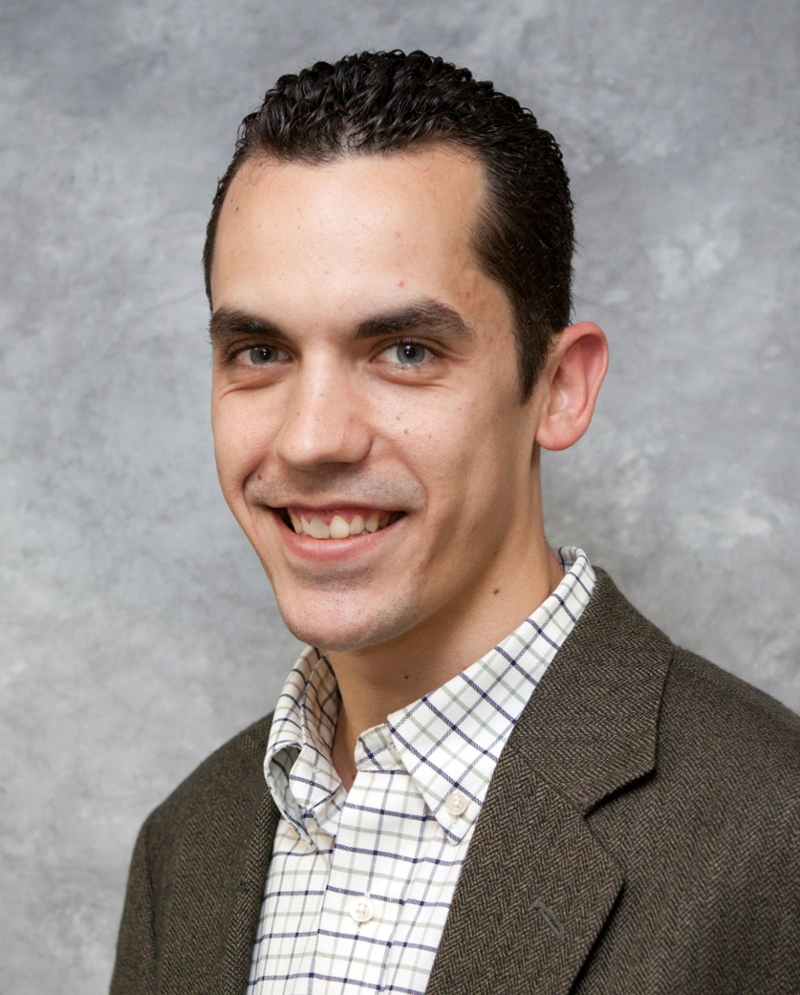Learning Through Teaching: Ohodnicki Joins EST&P as Core Faculty Member
By Amanda King and Cody Januszko
When he’s not leading a team of scientists working on sensors, power converters, transformers, and solid oxide fuel cells at the U.S. Department of Energy (DOE) National Energy Technology Laboratory (NETL) in Pittsburgh, Paul Ohodnicki is educating Carnegie Mellon University students on energy transport and storage.
Ohodnicki is currently teaching his first core course in the Energy Science, Technology and Policy (EST&P) master’s program, but he’s a familiar face around campus—he’s been teaching energy related courses in the Department of Materials Science and Engineering at Carnegie Mellon since 2011 and earned his master’s and doctoral degrees from the same department in 2006 and 2008, respectively.
In his ‘Energy Transport and Storage’ course, Ohodnicki covers transport and storage methods related to a whole spectrum of energy processes, including extraction of primary energy resources, like oil and natural gas, to power generation, to end use. In addition to covering oil and gas, the course emphasizes electricity transport and storage, and nuclear energy.
As a CMU alumnus, Ohodnicki understands the value individual faculty offer CMU students and the importance of students making connections with individual professors. As a core EST&P faculty member, Paul strives to fill a unique role for EST&P students, leveraging his position as a DOE scientist and technical lead to provide a distinct perspective to the program.
“The EST&P program has a good cross-section of faculty backgrounds that will be helpful for students with a variety of interests,” Ohodnicki said. “If students hone in on what they specifically want to accomplish in their few semesters here at CMU, they can connect with certain courses and professors to help crystallize their focus, and they can set themselves up for what they want to achieve in their careers.”
Ohodnicki, who is also an adjunct lecturer in the Department of Electrical and Computer Engineering at the University of Pittsburgh, finds immense personal value in teaching. Sometimes, this value is the new material he learns from students and colleagues. Other times, he is able to refresh and solidify his knowledge about different fields.
The material in his course couples well with Ohodnicki’s work at NETL, where is a solid-state physicist and material scientist focusing on the development of magnetic, optical, and electronic materials and devices. Currently, he leads an interdisciplinary team of scientists who are developing sensors that will play a critical role in improving the power grid’s reliability and safety.
Previously, Ohodnicki was an R&D Engineer at PPG Industries. He is the recipient of the 2016 Presidential Early Career Award for Scientists and Engineers, the highest honor the federal government can bestow on early-career scientists or engineers. Ohodnicki is a 2017 Promising Innovations Medal finalist and was honored by the Pittsburgh Business Times as one of 40 fast-rising executives.
In addition to his CMU degrees, he earned bachelor’s degrees in Engineering and Economics from the University of Pittsburgh. Ohodnicki currently serves as associate editor for the Journal of Electronic Metals and is a Science and Engineering Ambassador for the National Academy of Sciences.
People often ask him what he does in his free time, outside of teaching and working. His response is always the same: “family stuff.” Ohodnicki resides in Hampton Township (just north of the city) with his wife, 10-year-old son, Tanner, and seven-year-old son, Carson, who both play soccer and baseball. The family also recently adopted a five-year-old beagle named Jackson.

